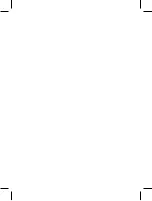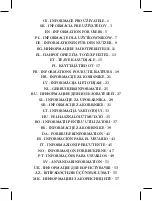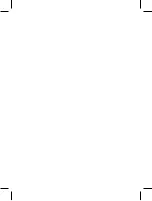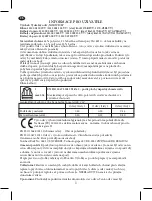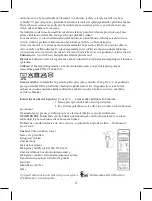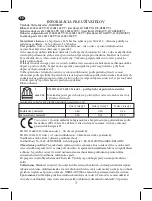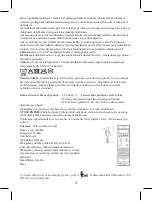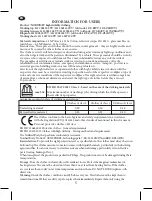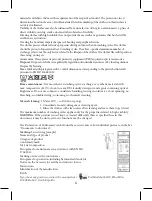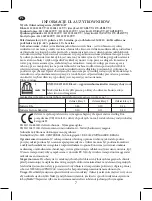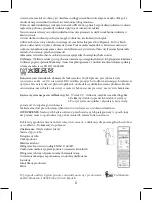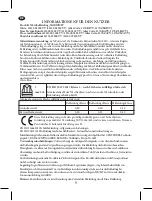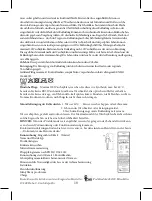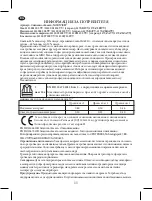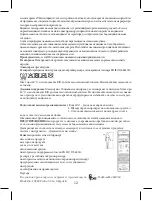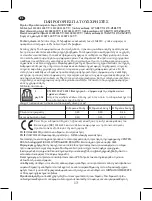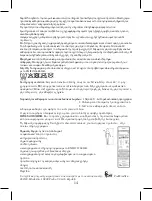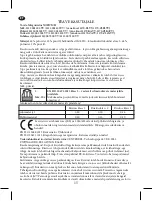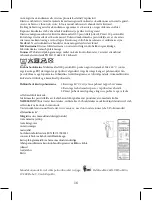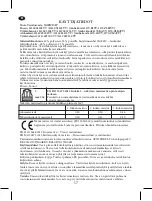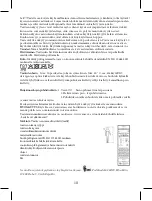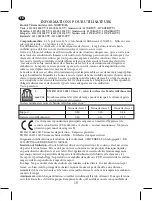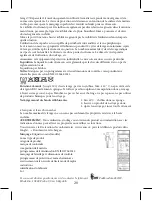
5
EN
Product: “NORWICH” high visibility clothing
Working top: 1112 001 205 VV /1112 001 155 VV/ (old code: 1170-BLVV; 1170-ZLBLVV)
Working trousers: 1112 002 205 VV /1112 002 155 VV/ (old code: 1170-KAVV; 1170-ZLKAVV)
Bibpants: 1112 003 205 VV /1112 003 155 VV/ (old code: 1170-ZAVV; 1170-ZLZAVV)
Working shorts: 1112 007 200 VV /1112 007 150 VV
INFORMATION FOR USERS
Material composition:
65 % Polyester, 35 % Cotton, reflective stripes 3M 8910. - glass marbles on
textile base – 65 % Polyester, 35 % Cotton.
Intended use: These pieces of clothes should be used as outer garment - they are highly visible and
must not be covered by other clothes or accessories.
The clothes are well visible in dangerous situations during a day under any lighting conditions and
also when it gets dark and the person is illuminated by a vehicle. These garments should be worn by
everyone who is exposed to such hazards. They may substantially reduce any risk of accident.
The examples of activities may include works carried out on roads, maintenance of tracks,
rehabilitation of contaminated areas, emergency and ambulance service, transport, post services,
security agencies, handling works in areas with moving vehicles etc.
Selection of the right reflective occupational clothes with high visibility in accordance with the
respective class must be carried out according to specific needs of the respective workplace, type of
risk, and concrete conditions of the respective workplace. The right selection is within competence
of an employer, who must determine and select the right type of clothes before they are used.
Top, trousers:
2
max 50x
EN ISO 20471:2013 Class 2 - based on the area of the striking materials.
Maximum number of washing cycles during which the clothes preserve
their reflective properties
minimum required surface of striking material in m
2
Underlying material
0,50
0,13
Retroreflective material
0,80
0,20
0,14
Clothes of class 3
0,10
Clothes of class 2 Clothes of class 1
The clothes conform to the basic hygienic and safety requirements in accordance
with the Regulation (EU) 2016/425 and other standards mentioned in this document.
Personal protective clothes of II class.
EN ISO 13688:2013 Protective clothes - General requirements
EN ISO 20471:2013 Clothes with high visibility - Testing methods and requirements.
The Notified Body that performs conformity assessment:
Notified Body No. 0493. CENTEXBEL; Technologiepark 7; BE-9052 ZWIJNAARDE; BELGIUM.
Restricted use:
To provide the right protection level, as specified above, the clothes must always be worn
buttoned up. The clothes must not come into contact with liquid chemicals, particularly with dissolving
agents and fire. It is also necessary to avoid excessive mechanical damage, particularly retro-reflective
parts (tearing, braking off etc.).
When transported, the products are packed in PE bags. The products must not be damaged during their
transportation.
Storage:
Store the clothes in closed, dry, well ventilated stores. Protect them against radiant heat of
heating devices. They must be stored not closer than 1 m at least from heating bodies. If the clothes
are wet, leave them to dry out at room temperature and store them. DO NOT STORE in places with
direct sun.
Warning:
Check the clothes’ condition visually before every use. The clothes must be kept clean to
remain functional. If they are dirty or pale, replace them immediately. Repair them only using the


